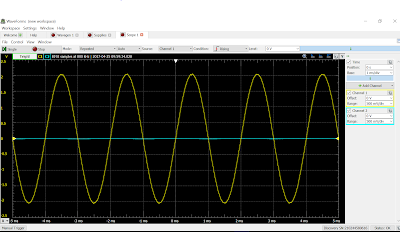 |
| We first started the day with a problem(Op amp on an Op amp!!!) |
Starting Lab...
The philosophy of this lab is to use thermistor in same way as in the previous lab "Temperature Measurement System" to obtain desired voltage difference of hot temperature of thermistor and cold temperature. In "Temperature Measurement System", we got voltage difference of 0.5V, but in this lab, we desire 2V of difference, so we are going to connect terminals at where we measure voltage difference into terminal of operational amplifier.
 |
| We first did thing called "balancing the bridge". We are using potentiometer as one of resistor to bring voltage across two points we want measure to zero. |
 |
| Close-up setup(1) |
 |
| Close-up setup(2) |
 |
| We assumed difference of voltage across two terminal when it is cold(20 C) and hot (37C) was 0.5V, and using that to calculation we decided we need to amplify the output voltage 4 times to reach 2V(4*0,5=2V). We choose 3K and 12K-ohm resistor as our resistors.(Actual resistances are also labeled) |
(There should be a video here but I cannot move it to here, it is at the very front of this blog, Caption of the video is here.)
(Caption: In this video we would get output voltages of 1V because actual voltage difference across the bridge we constructed without amplification was 0.25, so with amplification of 4, we got output voltage of 1V)
Summary: The mistake of this lab was we just assumed that output voltage without amplification was 0.5V (but really it was 0.25V), so with amplification of 4, we got our measurement of about 1V. We should have measured voltage difference without amplification and then choose proper resistors to amplify the input voltages(we should have choose resistors with 8 times differences).



















































